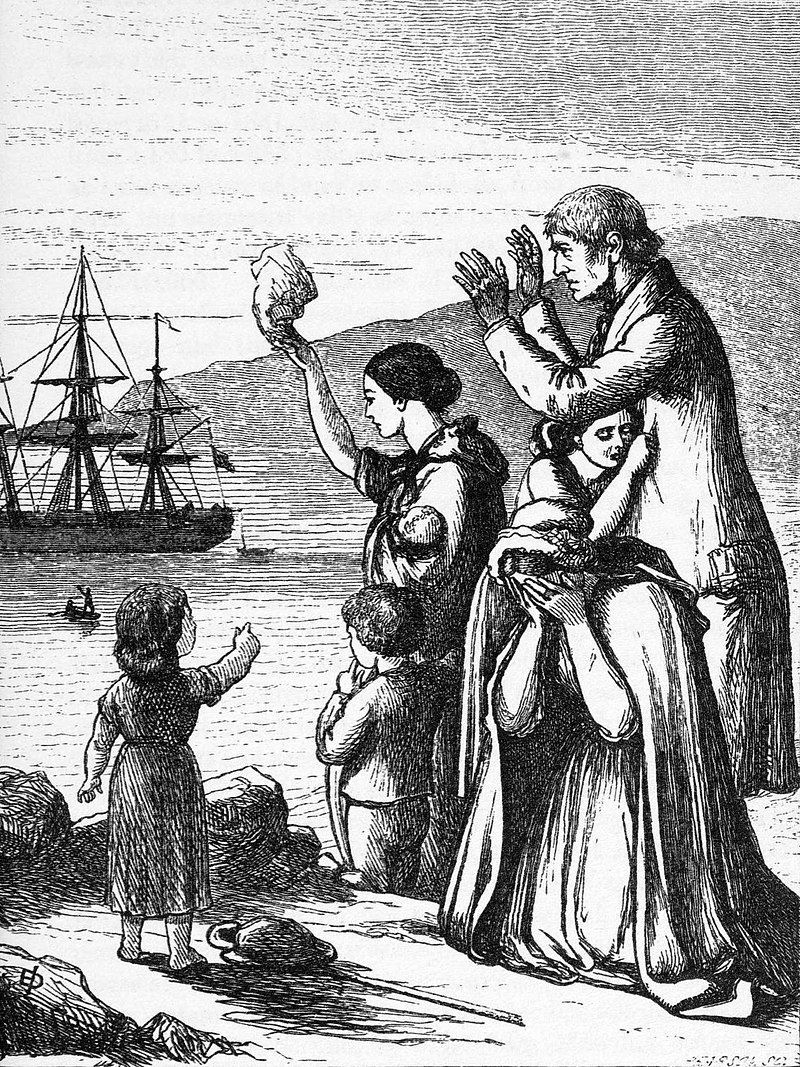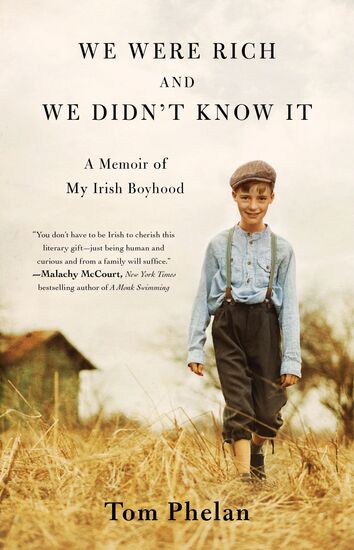The Irish Famine of 1845–1852 left a lasting mark, not just in Ireland, but across the globe, in England, America, Australia, and Canada.
Seven years of successive potato crop failures in Ireland saw over a million people die from starvation and another million or more coerced to emigrate. Ireland's population has never fully recovered from The Great Hunger/An Gorta Mor.
Observed annually in Ireland on the third Sunday in May, Irish Famine Commemoration Day (IFCD) holds a profound significance for people interested in the history of the Irish Famine. Unlike Saint Patrick's Day, a day of celebration, Irish immigrants often overlook this day and its importance. The annual National Famine Commemoration in Ireland revolves around the four provinces. This year's Edgeworthstown event will be the first time it is commemorated in County Longford, in the province of Leinster.
The official international date for Famine Commemoration Day has yet to be determined. In January 2024, during a Dail debate, Deputy Francis Noel Duffy asked Catherine Martin, Minister for Tourism, Culture, Arts, Gaeltacht, Sport, and Media, "to give a year's notice to allow the Irish people at home and abroad, time to plan for such an important day." Minister Martin responded, "It is important that the International Famine Commemoration date is flexible so that it can best suit particular opportunities to commemorate the Famine with meaningful and poignant International Events that may not fully align with that third Sunday in May."
Without an official date or guidance from the Irish government, how do the global Irish communities commemorate the Irish Famine? Although the third Sunday in May is not the official date for International Famine Commemoration, Irish communities have taken matters into their own hands and adopted it for their IFCD events.
So, today, Sunday, May 19, Irish communities in Ireland, England, Australia, and America will gather to commemorate the Irish Famine. The Walk to the Stone in Quebec, Canada, takes place the following Sunday and remains the oldest uninterrupted Famine Commemoration in the world.
"We are the descendants of the survivors, and we are here to bear witness," says Michael Blanch, responsible for creating the first Irish Famine Commemoration Day.
Michael, a former taxi driver, and his wife Betty did their first Famine Commemoration Walk in 2003 in Dublin - and did so alone.
Five years later, the Blanchs got the Government of Ireland to recognize an official day of Commemoration for Famine victims. The inaugural event in Dublin was held on May 25th, 2008.
"It didn't happen overnight," Blanch said. The "F" word in Ireland was a taboo word. There was nothing for the 100th anniversary. It was the 150th anniversary that was basically a government event.
"Monuments were built around the country, including the National Famine Memorial in Murrisk, County Mayo: John Behan's Famine Ship was unveiled in 1997 by President Mary Robinson."
In 2008, the event became official, and an inaugural Famine Walk took place in Dublin in May.
"That was the start of CCIFV, Committee for the Commemoration of Irish Famine Victims, the remembrance of those years, the martyrs, the innocents, and the exiles," Blanch said.
Interest in Famine Commemoration Day has waxed and waned since 2008, according to Blanch. Recently, it has picked up again.
"It is fixed in the calendar, it is well established, it is growing, and people are getting involved," Blanch said.
Many projects developed from the inaugural Famine Walk in Ireland, The Lumper School Project, The Travel Box Project, and American-born Bill Fahey's Marker Project. The latter delivers white Famine markers to places in Ireland and overseas where Irish Famine victims are buried.
"Bill Fahey deserves a lot of attention for what he did," Blanch said.
Blanch's Famine Commemoration in Dublin is done in three parts: Pilgrimage, Commemoration, and Celebration. The group meets at the Garden of Remembrance and walks with a Garda escort down O'Connell Street where it pauses at the GPO "to recognize the men and women of 1916 fighting and attaining partial independence for Ireland," Blanch said.
From there, led by a piper, the main group, dressed in rags, stop when they reach Rowan Gillespie's Famine Family on the quays beside the River Liffey.
In Perth, Australia, Fred Rea, who emigrated from Shandon, Cork, in 1972, is responsible for Irish Famine Commemoration Day.
"A lot of people think their great-great-grandparents came from Ireland," Rea said, "but they don't know where. When I tell them the Famine story, they wake up to the fact and think, there might be a connection."
For Irish Famine Commemoration Day in Perth, the Irish community gathers around the Famine sculpture Uaigneas, Loneliness. The sculpture, by Joan Walsh Smith and Charles Smith, depicts a woman bent over with a hole in her stomach.
"It represents the loneliness of the Irish mothers who were left behind when these girls, these children, 14-19 years old, just dragged out of a workhouse in Ireland, stuck on a ship for three months, lined up to be married off," Rea said.
The first IFCD in Perth was in 2017 when Uaigneas was unveiled. President Michael D. Higgins attended. "That was an amazing event," Rea said.
In Quebec, Canada, the oldest uninterrupted Famine Commemoration event in the world is held at the end of May simply because of the weather.
Victor Boyle, National President of the Ancient Order of Hibernians in Canada and the President, Chairman, and Founder of the Black Rock Montreal Memorial Park Foundation, said, "In 1898, there were over 2000 AOH members making the walk from St. Ann's Church to the stone, and the parade route was lined with 30,000 supporters."
The Black Rock is the marker where the Irish community gathers in Quebec.
"On the last Sunday in May, everyone knows about the annual walk to the stone. I have been doing this myself personally for 25 years," Boyle said, adding, "I talk about the 6,000 people who are buried beneath us.
"You can see the emotion in the faces of those gathered."
Due to his own Irish heritage, Boyles' dedication to the event is unwavering.
"They never got a chance to live their lives," Boyle said, speaking about the victims of the Irish Famine. "They were forced from their homes. They were scattered to the four corners of the earth without any care," Boyle said, adding, "I am a product of what happened."
The inscription on the Celtic Cross in the mass Famine Grave in Grosse Île, Canada, is testimony to Irish resilience in Canada, according to Boyle. The French inscription translated on the Celtic Cross reads: "Raised in 1909 by members of the Ancient Order of Hibernians, this monument honours the memory of the thousands of Irish immigrants who died on Grosse Île in 1847."
The Gaelic translation adds a little more information: "Children of the Gael died in the thousands on this island, having fled from the laws of the foreign tyrants and an artificial famine in the years 1847-48. God's loyal blessing upon them. Let this monument be a token to their name and honour from the Gaels of America. God Save Ireland."
The event in Quebec celebrates Irish resilience, even among those of Irish ancestry who speak French.
"We want people to come away with an understanding of history and an appreciation of what these poor people suffered. This is a very uplifting story; we will succeed and go on."
In England, Liverpool has its own Famine Memorial, but activist Austin Harney, Joint Southern and Eastern Regional Trades Union Congress (SERTUC) Race Relations Secretary, based in London, wants his city to recognize the Irish Famine and the victims who died there.
"An Gorta Mor is commemorated in Liverpool and Glasgow," Harney, event organizer of the An Gorta Mor Commemoration in London, said.
Harney's interest in the Irish Famine was gained through his own education on the subject.
"I was never taught Irish history properly at school; it was self-taught on my part," Harney said. "The Irish were the brunt of everybody's jokes; the Irish were treated appallingly in Britain. They were the last to be included in the Race Relations Act and Ethnicity in 1994."
During the mid-1800s, Irish Catholics were prohibited from living in the City of London.
"There is a section in London known as Little Ireland in the 19th Century," Harney said. "Many Irish immigrants in that part of London died in poverty and squalor and of diseases such as Typhus and the after-effects of An Gorta Mor." According to Harney, there were reports of 88 Irish people living in a five-bedroom house during the famine years.
"They came here looking like skeletons," Harney said, adding, "The Irish lived in areas around the parish of St. Charles, where the British Museum is today. That was all built on the backs of Irish labor."
Harney's work has led him to research immigrant history. Irish workers built the economy of Britain, according to Harney.
"In Britain, they had the biggest concentration of cheap labor—Irish Immigrants. Without the Irish workforce, Britain would not have become the first industrialized nation in the world," Harney said. Holding a senior position in the Trades Union Congress, Harney has researched and attended events for Irish workers throughout history in Britain.
In London, like Ireland and Australia, the IFCD event occurs yearly on the third Sunday in May. Harney invites guest speakers, and the group assembles outside Congress House.
Harney believes that Irish Famine Commemoration Day should be an international event.
"We have emigrated all over the world; we have plowed every corner of this planet. We built the economies in Canada, America, and other countries. It should be commemorated," Harney said.
On Sunday, May 19, at 12 p.m., there will be a gathering at the Gaelic American Club in Fairfield, Connecticut for its inaugural Irish Famine Commemoration Day.
Using the format from Ireland, Canada, and Australia, there will be a minute's silence in commemoration after the wreath-laying ceremony.
In celebration of Irish Famine descendants and their achievements there will be music. All are welcome.
Loretto Horrigan Leary is Secretary of Ireland's Great Hunger Museum of Fairfield, Connecticut.








